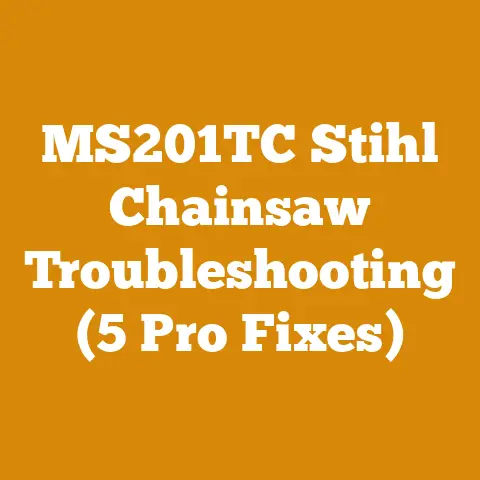Chainsaw Protective Shirt Benefits (5 Must-Know Arborist Tips)
Affordability is key, isn’t it? Whether you’re a seasoned arborist or a weekend warrior tackling firewood, keeping costs down while ensuring safety is paramount. Today, we’re diving into the world of chainsaw protective shirts, specifically focusing on the benefits and offering 5 must-know arborist tips to help you make informed decisions. We’ll explore how these shirts can not only protect you but also potentially save you money in the long run by preventing injuries and downtime. Let’s get started!
Chainsaw Protective Shirt Benefits (5 Must-Know Arborist Tips)
The whirring blade of a chainsaw demands respect, and that respect translates to proper safety gear. While helmets, chaps, and gloves often steal the spotlight, the chainsaw protective shirt is an unsung hero in the arborist’s arsenal. But are they worth the investment? Absolutely. Let’s unpack the benefits and share some insider tips.
Why Invest in a Chainsaw Protective Shirt? A Matter of Safety and Savings
Before we delve into the nitty-gritty, let’s address the elephant in the room: cost. A quality chainsaw protective shirt can set you back anywhere from $100 to $300, depending on the features, brand, and level of protection. That might seem steep, especially when you’re already budgeting for a new chainsaw, fuel, and other essential gear. However, consider this: the cost of an injury, both in terms of medical bills and lost work time, far outweighs the price of a protective shirt. I’ve personally witnessed accidents where a simple protective shirt could have drastically reduced the severity of the injury.
Think of it as an insurance policy for your torso. These shirts are designed with layers of specialized fibers that can snag and stop a chainsaw blade in its tracks. While they won’t make you invincible, they can significantly reduce the risk of serious cuts and lacerations to your upper body, arms, and shoulders – areas particularly vulnerable when working with a chainsaw overhead or in awkward positions.
The Cost of an Accident: A Stark Reminder
Let’s break down the potential costs associated with a chainsaw accident. According to the National Safety Council, the average cost of a workplace injury in the United States is around $41,000. This includes medical expenses, lost wages, and potential legal fees. Even a minor chainsaw injury can result in stitches, antibiotics, and several days of missed work. A more serious injury could require surgery, physical therapy, and months of recovery.
Now, consider the impact on your income. If you’re a professional arborist, every day you’re unable to work is a day you’re not earning money. Even for hobbyists, an injury can derail your projects and lead to frustration and financial strain.
Therefore, when you factor in the potential costs of an accident, a chainsaw protective shirt becomes a remarkably affordable investment. It’s a small price to pay for peace of mind and the assurance that you’re doing everything you can to protect yourself.
5 Must-Know Arborist Tips for Choosing and Using Chainsaw Protective Shirts
Alright, let’s get down to the practical stuff. Here are five essential tips from my experience in the field to help you choose the right chainsaw protective shirt and use it effectively:
1. Understand the Protection Levels:
Chainsaw protective clothing is typically classified according to European Standard EN 381 or EN ISO 11393. This standard defines different protection classes based on the chainsaw chain speed the garment can withstand. The classes are:
- Class 0: Resists chain speeds up to 16 m/s (meters per second)
- Class 1: Resists chain speeds up to 20 m/s
- Class 2: Resists chain speeds up to 24 m/s
- Class 3: Resists chain speeds up to 28 m/s
Most chainsaw protective shirts fall into Class 1, which is adequate for most general chainsaw use. However, if you’re using a particularly powerful chainsaw or working in high-risk environments, you might consider a Class 2 shirt. Check the shirt’s label for its protection class.
Cost Implication: Higher protection classes generally come with a higher price tag. A Class 2 shirt might cost 20-30% more than a Class 1 shirt. Consider your specific needs and risk level when making your decision.
2. Prioritize Fit and Comfort:
A protective shirt is only effective if you wear it consistently. And you’re more likely to wear it if it’s comfortable. Choose a shirt that fits well and allows for a full range of motion. Look for features like adjustable cuffs, breathable fabrics, and a comfortable collar.
Avoid shirts that are too tight or too loose. A tight shirt can restrict your movement and make it difficult to work. A loose shirt can snag on branches or equipment, increasing the risk of an accident.
Cost Implication: Don’t skimp on fit and comfort to save a few dollars. A poorly fitting shirt will likely end up gathering dust in your closet. Invest in a shirt that you’ll actually enjoy wearing. Some brands offer customized fitting options, which may cost a bit more but can be well worth it.
3. Consider the Material and Construction:
Chainsaw protective shirts are typically made from a combination of materials, including:
- Outer Shell: This is the visible layer of the shirt and is usually made from a durable fabric like nylon or polyester. Look for a shell that is water-resistant and abrasion-resistant.
- Protective Layer: This is the most important part of the shirt and is made from multiple layers of specialized fibers, such as Kevlar, nylon, or polypropylene. These fibers are designed to snag and stop a chainsaw blade.
- Lining: This is the inner layer of the shirt and is usually made from a comfortable fabric like cotton or mesh. Look for a lining that is breathable and moisture-wicking.
Pay attention to the quality of the stitching and construction. A well-made shirt will be more durable and provide better protection.
Cost Implication: Shirts with higher-quality materials and construction will generally cost more. However, they will also last longer and provide better protection. Consider the long-term cost savings of investing in a durable shirt that can withstand the rigors of daily use.
4. Inspect and Maintain Your Shirt Regularly:
Just like any piece of safety equipment, your chainsaw protective shirt needs to be inspected and maintained regularly. Before each use, check for any signs of wear and tear, such as rips, tears, or frayed edges. Pay particular attention to the protective layer. If you notice any damage, replace the shirt immediately.
Follow the manufacturer’s instructions for washing and caring for your shirt. Avoid using harsh detergents or bleach, as these can damage the protective fibers. Hang the shirt to dry, and avoid putting it in the dryer.
Cost Implication: Proper maintenance can significantly extend the lifespan of your protective shirt. By inspecting and cleaning your shirt regularly, you can prevent minor damage from escalating into major problems that require replacement.
5. Layer Strategically:
While chainsaw protective shirts offer significant protection, they are not a substitute for other essential safety gear. Always wear a helmet, eye protection, hearing protection, gloves, and chainsaw chaps when operating a chainsaw.
Layering your clothing can also enhance your protection and comfort. In cold weather, wear a base layer of moisture-wicking fabric to keep you warm and dry. In hot weather, wear a lightweight, breathable shirt under your protective shirt to help you stay cool.
Cost Implication: Layering your clothing can help you extend the lifespan of your protective shirt by reducing wear and tear. It can also improve your comfort and productivity, which can ultimately save you money in the long run.
Case Study: The Cost-Benefit Analysis of Chainsaw Protective Shirts
Let’s look at a hypothetical case study to illustrate the cost-benefit analysis of investing in a chainsaw protective shirt.
Scenario:
- Arborist: John, a professional arborist working in the Pacific Northwest.
- Annual Income: $60,000
- Chainsaw Protective Shirt: Costs $200
- Potential Injury: A serious cut to the arm requiring surgery, physical therapy, and 3 months of missed work.
- Medical Expenses: Estimated at $15,000
- Lost Wages: $15,000 (3 months of lost income)
Cost Without Protective Shirt:
- Medical Expenses: $15,000
- Lost Wages: $15,000
- Total Cost: $30,000
Cost With Protective Shirt:
- Chainsaw Protective Shirt: $200
- Potential Minor Injury (e.g., a small cut that requires a few stitches): $500 (estimated)
- Lost Wages (e.g., 1 day of missed work): $250 (estimated)
- Total Cost: $950
Savings:
- $30,000 (Cost Without Protective Shirt) – $950 (Cost With Protective Shirt) = $29,050
In this scenario, investing in a $200 chainsaw protective shirt could save John a staggering $29,050. This highlights the immense financial benefit of taking safety precautions.
Data-Driven Insights: Chainsaw Accident Statistics
To further emphasize the importance of chainsaw protective gear, let’s examine some relevant statistics:
- Chainsaw Accidents: According to the U.S. Consumer Product Safety Commission, chainsaws cause approximately 30,000 injuries each year in the United States.
- Common Injuries: The most common chainsaw injuries are cuts and lacerations to the legs, arms, and hands.
- Fatalities: Chainsaw accidents can also be fatal. According to the Centers for Disease Control and Prevention (CDC), approximately 100 people die each year in the United States from chainsaw-related injuries.
- Cost of Injuries: The average cost of a chainsaw injury is estimated to be around $10,000, including medical expenses and lost wages.
These statistics underscore the serious risks associated with chainsaw use and the importance of taking appropriate safety precautions.
Real-World Examples: Learning from Others’ Experiences
Beyond the statistics, it’s important to consider real-world examples of how chainsaw protective shirts have saved lives and prevented serious injuries.
I recall a story from a fellow arborist who was working on a tree removal project when his chainsaw kicked back and struck him in the chest. Fortunately, he was wearing a high-quality chainsaw protective shirt, which absorbed the impact and prevented the blade from penetrating his skin. He walked away with only a minor bruise.
Another arborist I know was trimming branches when his chainsaw slipped and came into contact with his arm. Again, his protective shirt prevented a serious injury. He sustained a small cut, but it could have been much worse without the shirt.
These are just two examples of how chainsaw protective shirts can make a real difference in the field. They provide an extra layer of protection that can help you avoid serious injuries and stay safe on the job.
Budgeting for Chainsaw Protective Gear: A Holistic Approach
When budgeting for chainsaw protective gear, it’s important to take a holistic approach and consider all the necessary items. This includes:
- Chainsaw Protective Shirt: $100 – $300
- Chainsaw Chaps: $50 – $150
- Helmet with Face Shield and Hearing Protection: $50 – $150
- Gloves: $20 – $50
- Steel-Toed Boots: $80 – $200
The total cost of all this gear can range from $300 to $850, depending on the quality and features you choose. While this may seem like a significant investment, it’s important to remember that it’s an investment in your safety and well-being.
Cost Optimization Strategies: Finding the Best Value
Here are some tips for optimizing your budget when purchasing chainsaw protective gear:
- Shop Around: Compare prices from different retailers to find the best deals.
- Look for Sales and Discounts: Many retailers offer sales and discounts on safety gear throughout the year.
- Consider Used Gear: You may be able to find used safety gear in good condition at a lower price. However, be sure to inspect the gear carefully before purchasing it to ensure that it is still safe and effective.
- Prioritize Essential Items: If you’re on a tight budget, prioritize the most essential items, such as a chainsaw protective shirt, chaps, and a helmet. You can always add other items later as your budget allows.
The Long-Term Investment: Safety Pays Dividends
Ultimately, investing in chainsaw protective gear is a long-term investment in your safety, health, and financial well-being. By taking the necessary precautions, you can reduce the risk of serious injuries and stay safe on the job.
Remember, the cost of an accident far outweighs the price of protective gear. Invest in the best gear you can afford and wear it consistently.
Calculating the ROI of Safety: A Formula for Peace of Mind
While it’s difficult to put an exact dollar amount on the return on investment (ROI) of safety gear, we can use a simplified formula to illustrate the potential financial benefits:
ROI = (Potential Savings – Cost of Gear) / Cost of Gear
Using the example from our case study:
ROI = ($29,050 – $200) / $200 = 144.25
This means that for every dollar you invest in a chainsaw protective shirt, you could potentially save $144.25 in avoided medical expenses and lost wages.
While this is a simplified calculation, it demonstrates the significant financial benefits of investing in safety.
The Future of Chainsaw Protective Gear: Innovation and Affordability
The future of chainsaw protective gear is bright, with ongoing innovations aimed at improving safety, comfort, and affordability.
Researchers are developing new materials and technologies that can provide even greater protection against chainsaw injuries. For example, some companies are experimenting with smart fabrics that can detect when a chainsaw is approaching and automatically activate a braking system to stop the blade.
Manufacturers are also working to make protective gear more comfortable and breathable. This is important because arborists and other chainsaw users often work in hot and humid conditions, and uncomfortable gear can lead to fatigue and decreased productivity.
Finally, manufacturers are striving to make protective gear more affordable. This is essential to ensure that all chainsaw users have access to the safety equipment they need to protect themselves.
Emerging Trends: Smart Fabrics and Enhanced Comfort
Here are some emerging trends in chainsaw protective gear:
- Smart Fabrics: These fabrics can detect when a chainsaw is approaching and automatically activate a braking system to stop the blade.
- Enhanced Comfort: Manufacturers are using new materials and designs to make protective gear more comfortable and breathable.
- Improved Durability: New materials and construction techniques are making protective gear more durable and longer-lasting.
- Increased Affordability: Manufacturers are working to make protective gear more affordable by using less expensive materials and streamlining production processes.
Conclusion: Prioritize Safety, Reap the Rewards
Investing in a chainsaw protective shirt is not just about complying with safety regulations; it’s about protecting yourself from serious injuries and ensuring your long-term health and well-being. By understanding the benefits of these shirts, choosing the right one for your needs, and using it consistently, you can significantly reduce your risk of accidents and stay safe while working with a chainsaw.
Remember, safety is not an expense; it’s an investment. And the rewards of that investment – a healthy body, a productive career, and peace of mind – are priceless. So, gear up, stay safe, and keep those blades spinning responsibly!
Actionable Takeaways: Your Next Steps
- Assess your risk: Determine the level of protection you need based on the type of chainsaw you use and the environment you work in.
- Research different brands and models: Read reviews and compare features to find the best chainsaw protective shirt for your needs and budget.
- Try on different sizes and styles: Ensure that the shirt fits comfortably and allows for a full range of motion.
- Inspect and maintain your shirt regularly: Check for any signs of wear and tear and follow the manufacturer’s instructions for washing and caring for your shirt.
- Wear your chainsaw protective shirt consistently: Make it a habit to wear your shirt every time you operate a chainsaw, no matter how short the task may be.
By following these steps, you can ensure that you’re properly protected and can work safely and confidently with a chainsaw. Remember, safety is always the top priority.






